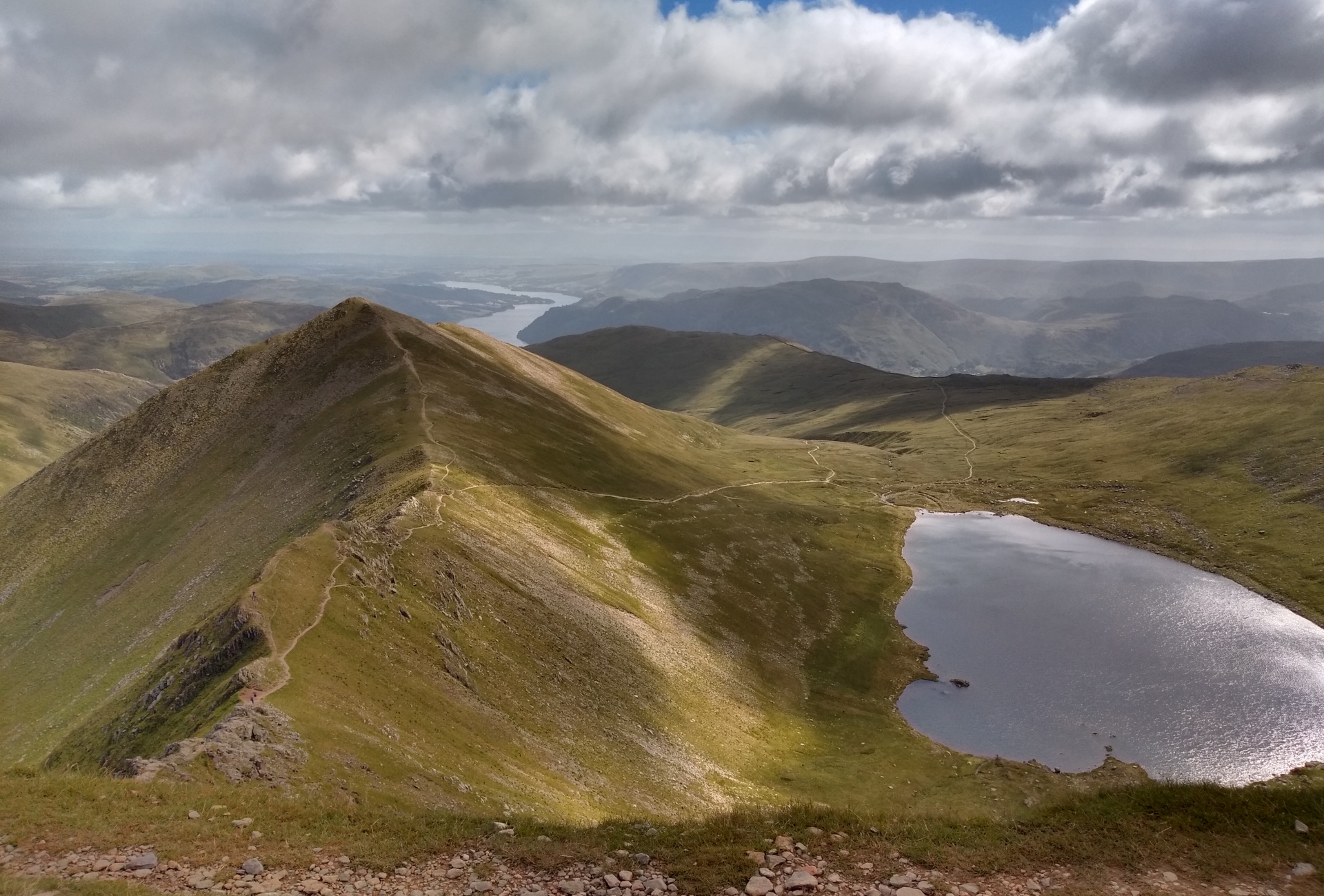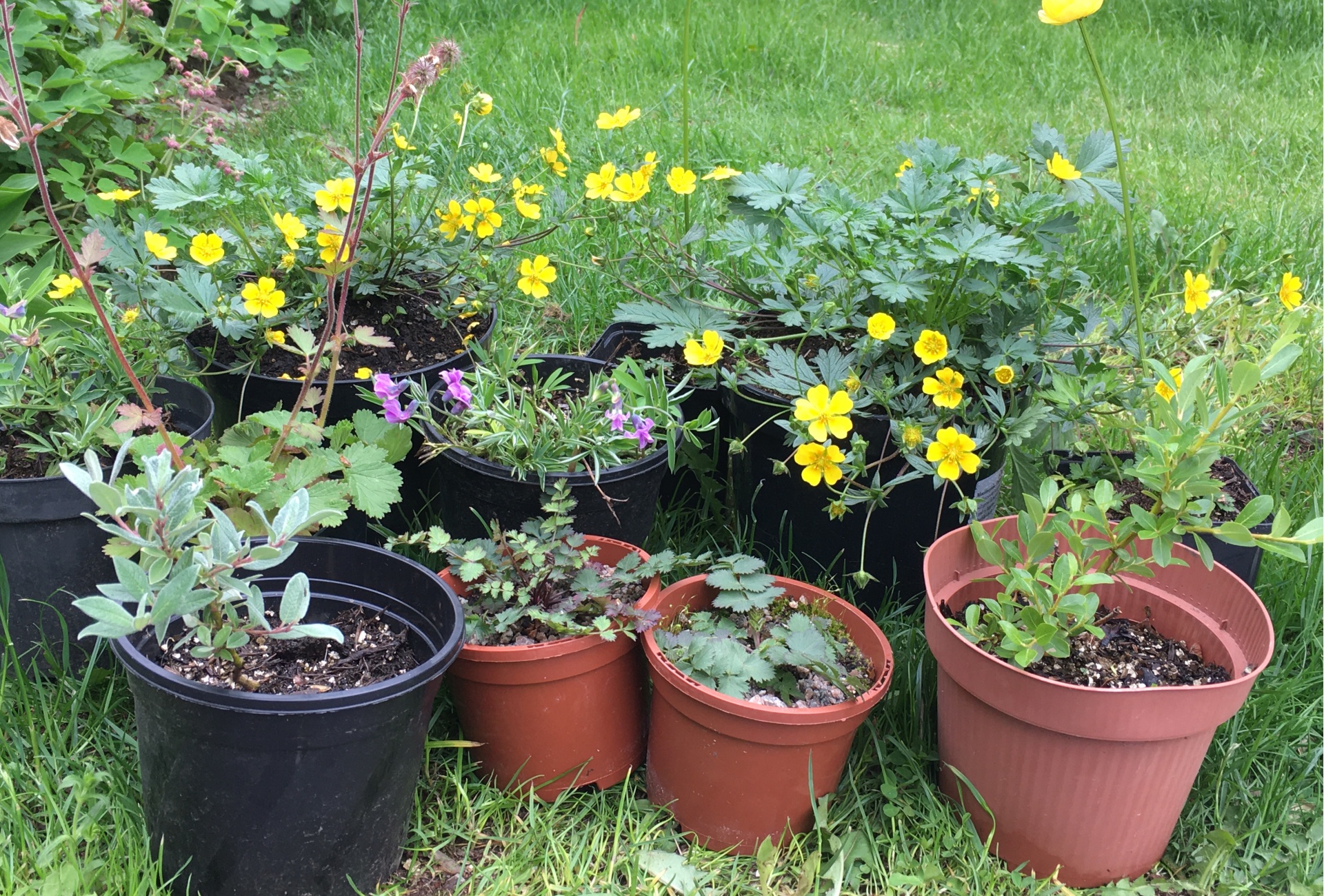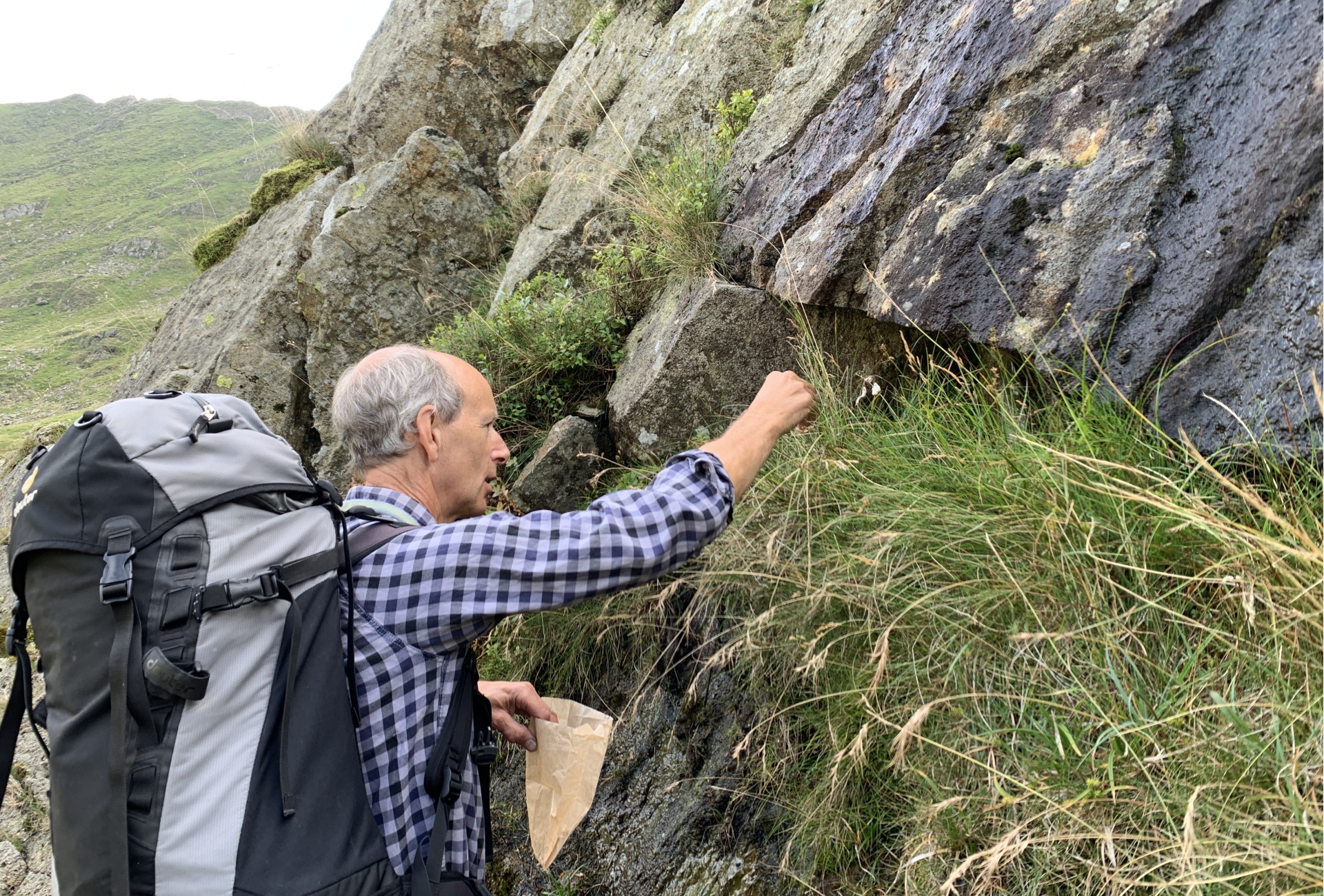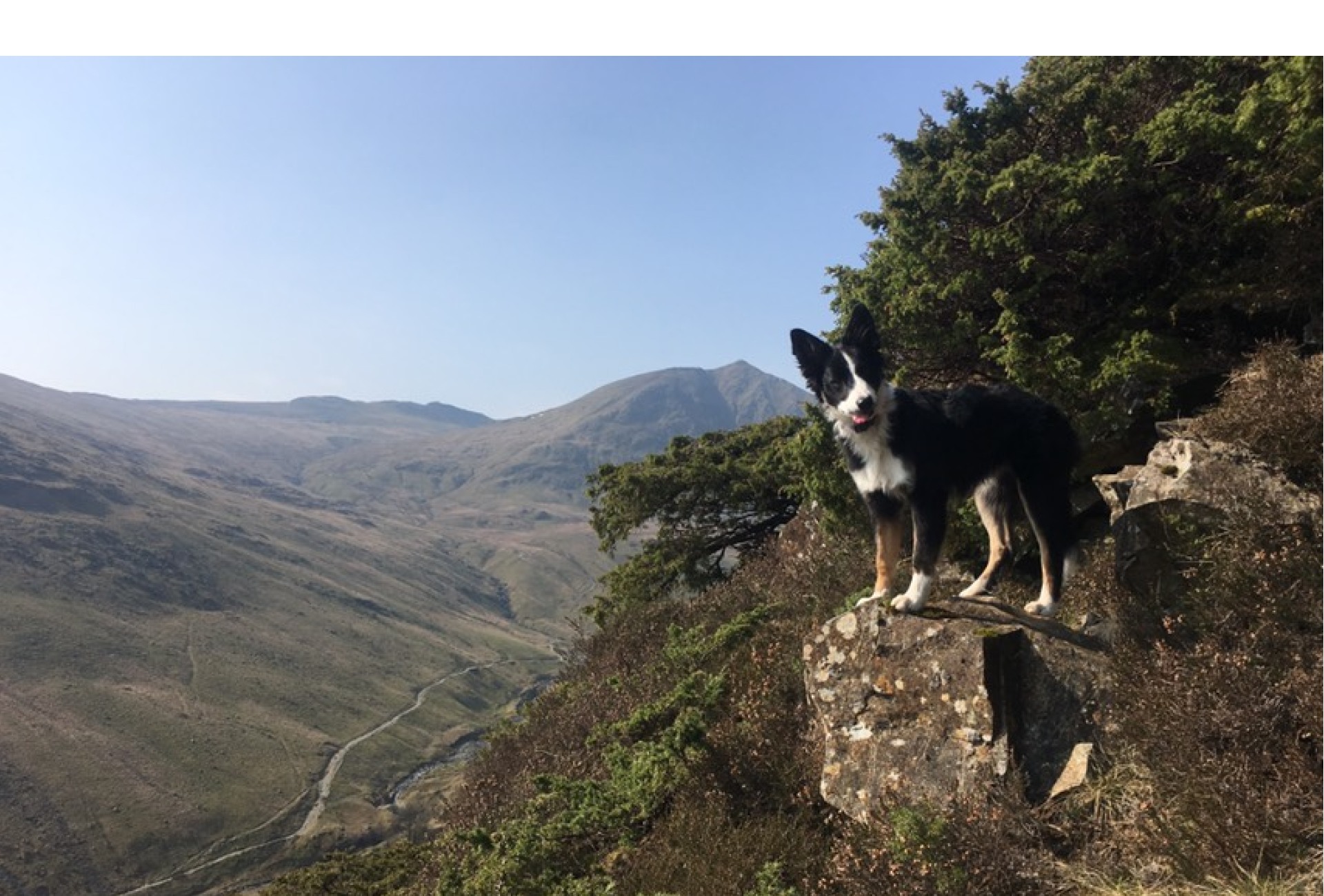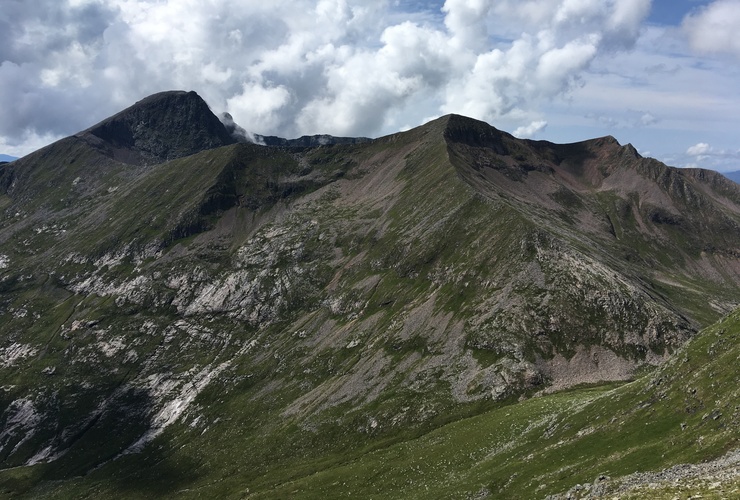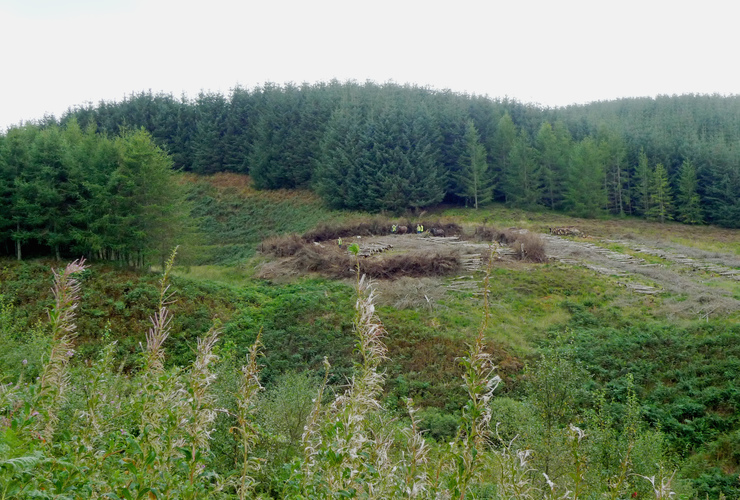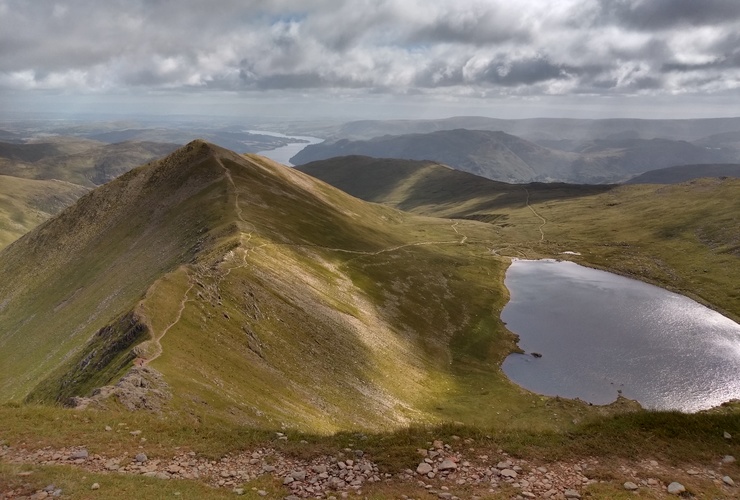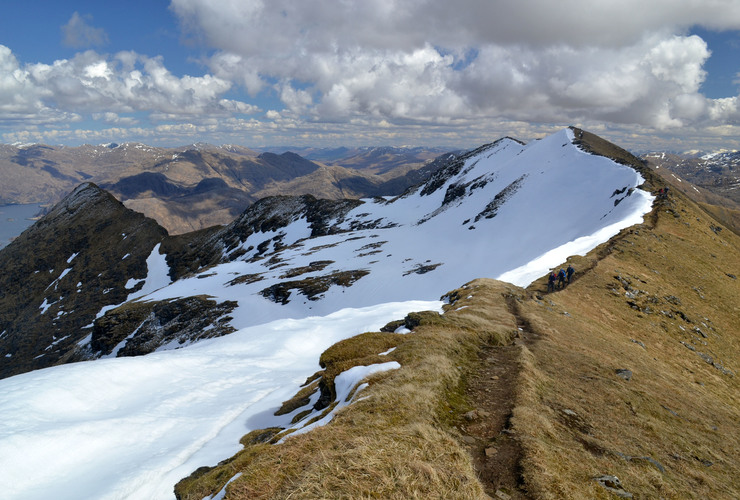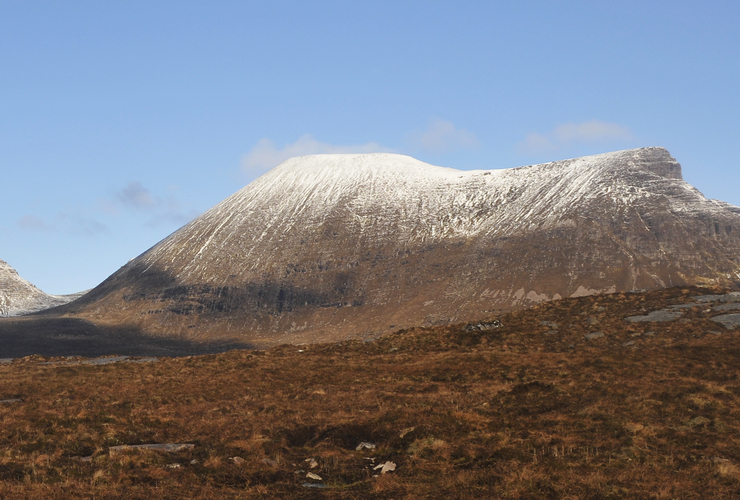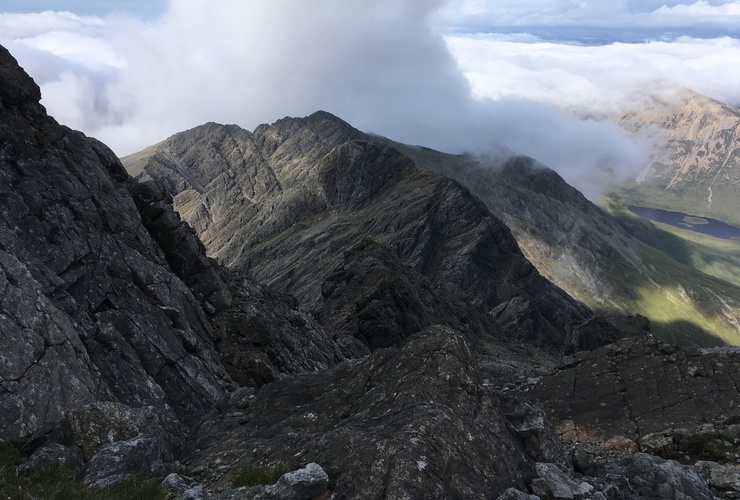Restoring habitats
- Over 1,000 montane willows have been propagated and planted out onto Glenridding Common since October 2017. All grown by Natural England, JMT staff and local members of the community.
- Over 1,000 native broadleaf trees have been planted and protected in fenced exclosures in key areas of the common, with the help of volunteers.
- Nearly 2,000 wildflowers and specialist alpine plants have been grown on from local seeds and planted out onto Glenridding Common. Species include Alpine Cinquefoil, Bitter vetch, Wood Cranesbill and Water Avens.
- 38 environmental surveys have been conducted since the Trust took over management of Glenridding Common in 2017. These have looked at breeding birds, juniper trees and rare mountain ringlet butterflies to better understand this upland landscape and inform management decisions. Alongside Natural England, The Trust has commissioned detailed surveys of Lichens, Bryophytes, Alpine Saxifrage and Alpine Mouse-ear to better document the special qualities of Glenridding Common.
Working with communities
- Nine local volunteers have been involved in growing five rare montane willow species since 2018. Taking cuttings in the spring, willows are propagated from a stock plant and nurtured on throughout the year before being planted out onto high altitude ledges to increase remnant existing populations.
- The Trust’s conservation fund granted £1,000 for the local community around Glenridding Common to create a wildflower meadow in Glenridding village. The money allowed the local parish to survey the field, plant wildflower plugs, spread specialist wildflower seeds and cut the meadow at specific times of year to aid wildflower growth. With the help of local volunteers, the Trust has also created an 80 metre stretch of wildflower meadow behind the tourist information centre.
- Trust staff delivered talks about our work on Glenridding Common to local groups, including the local Women’s Institute group, Ambleside Natural History Society, and Barrow Ramblers Group.
- The local primary school in Patterdale visited Glenridding Common for a day’s moorland habitat monitoring and Trust staff have planted wildflower plug plants in the school’s dedicated ‘wild area’.
- As the Trust nears the end of its lease agreement with the National Park Authority, an open tender process is underway for a long term lease on the land. We have undertaken a significant consultation exercise, asking to hear from the local community, partner organisations and our Members, in order to review the past four years and ask questions about the future.
Collaborating with partners
- In partnership with the Fix the Fells project, we’ve led seven joint work parties with volunteers. Work involved dismantling cairns on the summit plateau (which can cause erosion and habitat disturbance and can be a danger to walkers), as well as clearing fell drains and stabilising a land slip.
- The British Mountaineering Council, Natural England and the John Muir Trust have worked together to install a temperature sensor on the Helvellyn Crags. The sensor allows ice climbers to view the ground temperature of the climbing surface before they arrive at the crag. As well as ensuring climbers stay safe, knowing the ground temperature protects rare alpine plants from being damaged by crampons and ice axes.
- We have entered a Memorandum of Understanding with United Utilities and Cumbria Wildlife Trust to improve the resilience of the upper Thirlmere catchment area. Initial survey work on the area has been completed, and practical work such as native tree planting can start in 2022.
Wild places for all
- Our Glenridding Common Seasonal Ranger helped with increased visitor pressures over the summer. They walked over 378km over the three months of summer, talking to visitors, fixing fire burn patches, scattering inappropriate cairns, picking up 106kg of litter, and conducting 386 visitor surveys - made possible by the National Parks Safer Lakes funding.
- Two part time contractors have been working on the footpaths of Glenridding Common since 2018. Averaging two days a week, they have been blocking short cuts, completing small sections of pitching, landscaping, and creating drainage channels, all to maintain access for the public.
2022 focus
- Explore long term future of the Trust’s involvement with the common. The Trust will be responding to the Lake District National Park Authority tender for a long term lease in collaboration with the local community and other stakeholders.
- Continue to explore new planting possibilities on Glenridding Common. In conjunction with Natural England our hope is that in 2022 we will be able to continue propagating extremely rare Mountain Avens. Seeds collected in 2020 are expected to be ready for planting in 2023. The natural population on Helvellyn is functionally extinct so supplementary planting will bring this special plant back from the brink.
- Assess responses to the public consultation and use this to inform our response to the National Park’s management tender for Glenridding Common.
- Plant 1,600 native trees in the Wythburn Valley in partnership with United Utilities and Cumbria Wildlife Trust as part of the Thirlmere Resilience Project. The trust aims to engage members, local people, schools, and local youth groups with this project. Strategic planting of native woodland will transform the banks of the Wythburn beck into an area that works for wildlife, flood mitigation and water quality improvement.
